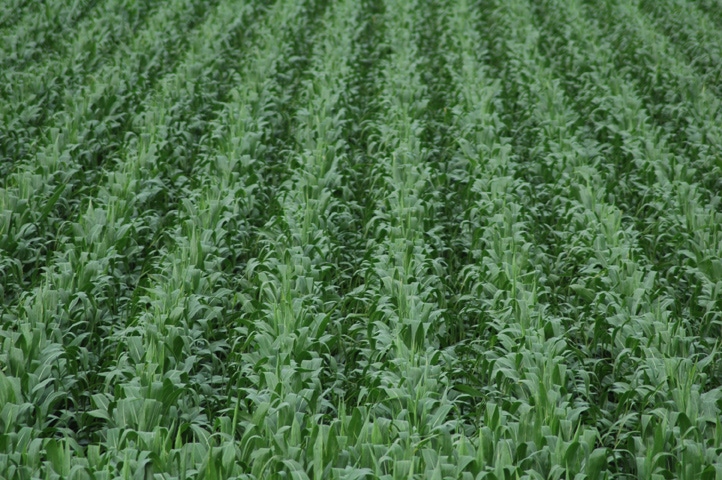July 7, 2011

Although the large acreage reported at the end of June shocked the corn market, it almost goes without saying that good yields are still important to end up with a large crop, says Emerson Nafziger, University of Illinois Extension agronomist.
"While guessing at crop prospects before we see many tassels is always a little dangerous, we now have some idea about the physiological state of the crop as it enters the most critical yield-determining part of the season," Nafziger says.
The latest report from the National Agricultural Statistics Service (NASS) indicates that 8% of the Illinois corn crop was silking as of July 3, behind the 21% average of the past five years, but set to increase substantially over the next week as the crop planted in early May begins to silk.
"In our planting date study at Urbana, a 109-day RM hybrid planted on March 31 silked on July 3, and the 113-day hybrid on July 5," he says. "That's after about 1,400 growing degree days for the early one, and 1,450 for the later one. The May 5 planting will probably silk later this week, at about 1,300 or 1,350 growing degree days."
Most of the crop – where there hasn't been serious water damage – has benefitted from the dry weather and sunshine over the past two weeks, he said.
"Root systems have grown well, and the good rate of crop growth shows that roots are tapping soil water beneath the top few inches," he says. "Now that the surface soils are drying out, roots are actively taking up water from deeper in the soil, and this is keeping the plant functioning well."
Crop color is good to outstanding in most fields, though Nafziger has seen a few fields with N deficiency symptoms.
"These are likely fields where N was not yet applied, was applied so late that it was not yet being taken up or where a lot of N loss has occurred," he says. "In fact, with the dry weather of the past two weeks, some of the 'rescue' applications that have been made, based on fear of N loss or on poor crop color when soils were very wet, may still be sitting in the dry surface soil, without access to the roots."
The fact that "non-rescued" fields are looking mostly well-nourished reminds us that guesses about how much N we have lost vs. how much root function has been compromised are usually not very accurate, he adds.
In any case, the dark green color means that photosynthetic rates are high, and as leaf area and light interception approach their maximum, the crop is producing sugars at maximum rates. This is exactly what the crop needs to do as it enters the pollination stages, Nafziger says.
"We do not have a good test to see how sugar levels are holding up in the plant, but with so much sunshine, moderate temperatures and a healthy crop canopy, they should be as high as they can be at this point," he says. "We need to remember that the effect of good conditions now can be overcome if it turns dry and hot later in July. If that happens, we will start to run out of water and kernel numbers will drop, along with yield potential."
Nafziger says the main things to watch for now are signs that photosynthetic rates might be dropping, and, by the time pollination ends and silks start to turn brown, how many kernels have been fertilized.
"Threats to photosynthetic rates are almost always visible as leaf symptoms," he says. "These would include loss of dark green color, curling up due to lack of adequate water, disease damage to leaf area or loss of leaf area from hail or insects."
After silks start to turn brown, he says it should be easy to see which kernels are fertilized and starting to increase in size. In round numbers, maximum yield potential is expected when kernel numbers are in the range of 15-20 million/acre. At 32,000 ears/acre, that means 500-550 kernels/ear. If conditions remain good for two weeks after brown silk, there tends to be little abortion, Nafziger says. But any of these leaf symptoms that occur during the two to three weeks after brown silk may signal some loss of developing kernels.
For more information, read the July 7 edition of The Bulletin.
You May Also Like




